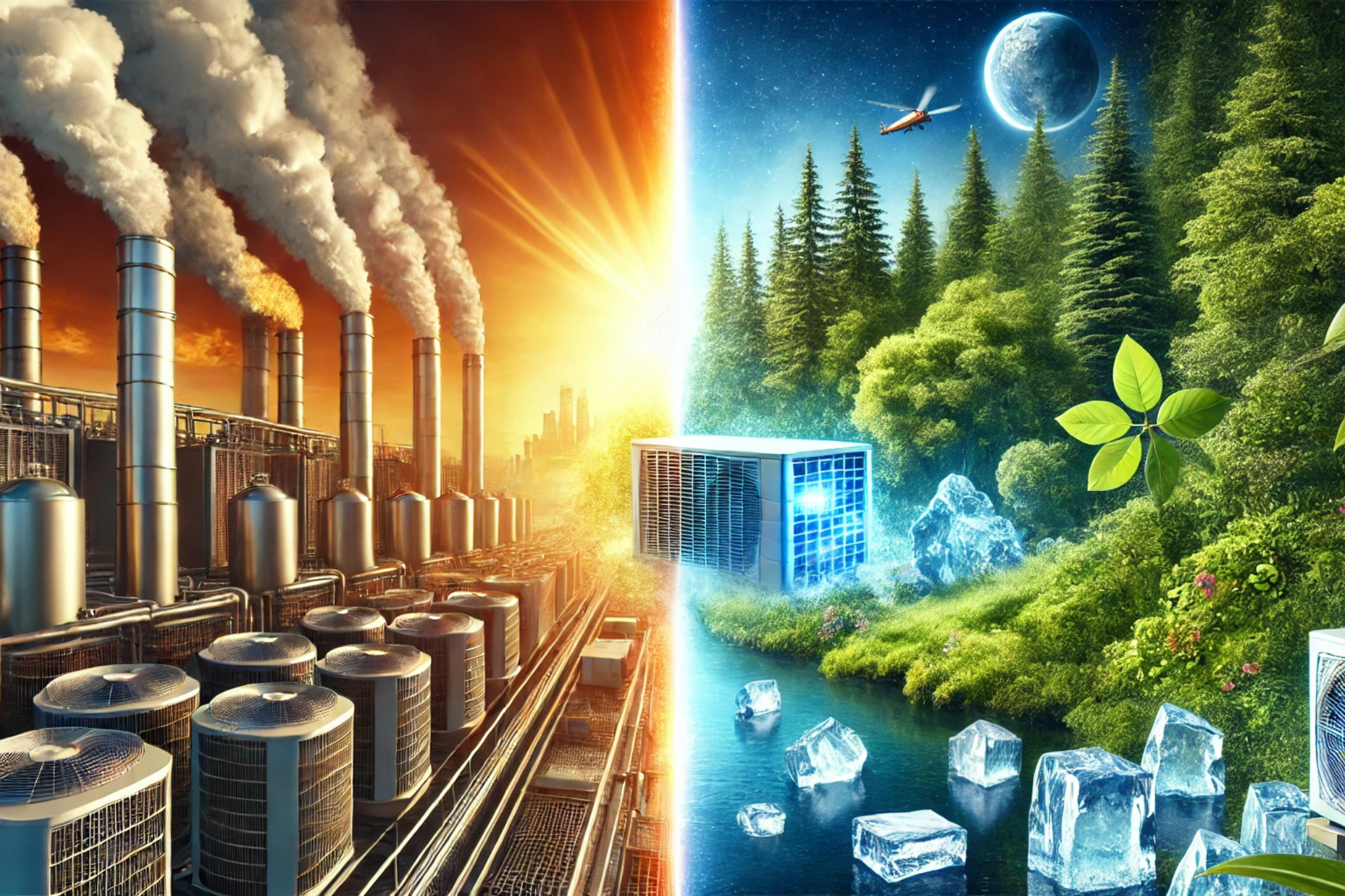
13 Feb THE REFRIGERATION SECTOR
The refrigeration sector is undergoing a transformation driven by growing environmental concerns and evolving international regulations. Synthetic refrigerants, such as hydrofluorocarbons (HFCs), have played a crucial role in the industry. However, their high Global Warming Potential (GWP) has accelerated the search for more sustainable alternatives. This is where natural refrigerants, such as ammonia (NH₃), carbon dioxide (CO₂), and hydrocarbons (propane and butane), come into play.
This transition is not just a trend but a technical and regulatory necessity. Let’s explore the benefits and challenges of this shift, as well as the environmental impact and regulations driving it.
Benefits of Natural Refrigerants
🌍 Reduced Environmental Impact
Natural refrigerants have extremely low or zero Global Warming Potential (GWP). Unlike HFCs, which can remain in the atmosphere for decades and contribute to climate change, these compounds are more sustainable and less harmful to the ozone layer.
💰 Improved Energy Efficiency
Many systems using natural refrigerants, especially CO₂ in transcritical systems or ammonia in industrial installations, offer superior energy performance. This results in lower long-term operational costs and reduced electricity consumption.
🔧 Greater Availability and Lower Long-Term Costs
Unlike synthetic refrigerants, which require expensive manufacturing processes and have a high carbon footprint, natural refrigerants are more accessible. Additionally, increasing taxes on HFCs make natural alternatives more cost-effective in the future.
Challenges in Implementing Natural Refrigerants
⚠️ Equipment Compatibility and Redesign
One of the biggest challenges is adapting existing systems. Most equipment designed for HFCs cannot use natural refrigerants without modifications, requiring investment in technology and technician training.
- Ammonia is highly efficient but corrosive and toxic in high concentrations.
- CO₂ operates at much higher pressures than HFCs, necessitating reinforced equipment.
- Hydrocarbons are flammable, requiring additional safety measures.
📜 Global Regulations and Standards
Regulations are evolving to phase down high-GWP refrigerants. Key regulations include:
- Kigali Amendment to the Montreal Protocol – Mandates the phasedown of HFCs.
- EU F-Gas Regulation – Restricts the use of high-GWP HFCs in new systems.
- EPA SNAP (USA) – Regulates which refrigerants can be used in specific applications.
Companies must strategically plan this transition to avoid penalties and comply with emerging environmental standards.
Strategies for a Successful Transition
To ensure the effective adoption of natural refrigerants, it is essential to:
✅ Assess Existing Infrastructure – Identify which equipment can be adapted and which needs replacement.
✅ Train Technical Staff – Ensure that installers and maintenance personnel understand new safety and operational requirements.
✅ Adopt Hybrid Technologies – In some cases, combining CO₂ and ammonia can optimise efficiency without major modifications.
✅ Implement Continuous Monitoring and Predictive Maintenance – Prevent leaks and ensure optimal system performance.
Is Now the Right Time for Transition?
Absolutely. The combination of environmental benefits, energy efficiency, and strict regulations makes the shift to natural refrigerants a strategic long-term investment. However, understanding the technical challenges and carefully planning implementation is crucial to maximising return on investment and minimising risks.
The refrigeration industry is at a turning point. Companies that adopt these sustainable technologies ahead of their competitors will gain a significant advantage in cost savings, regulatory compliance, and environmental responsibility.
Below, we present a comparative infographic between natural and synthetic refrigerants. The Global Warming Potential (GWP) is highlighted in red, where natural refrigerants show significantly lower values compared to HFCs. Energy efficiency metrics (blue) and safety ratings (green) are also included, reflecting the advantages and challenges of each option.


